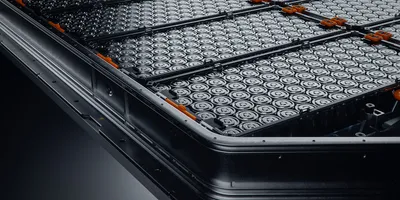Whether it’s a phone, laptop, car, or any number of portable devices, the way we work and live wouldn’t be possible without lithium-ion (Li-ion) batteries. The first commercial Li-ion battery was used in 1991 and this invention received the 2019 Nobel Prize in Chemistry for the impact that it has had on the technological landscape of modern society. The demand for Li-ion batteries has been growing since their invention, but in recent years has increased exponentially due to a heightened focus on sustainability and reducing CO2 emissions.
The Li-ion battery has become the industry standard for many applications because of its higher energy density, longer lifespan, and improved cost-effectiveness compared to alternatives, i.e., alkaline, lead-acid, or nickel-metal hydride batteries. Li-ion batteries typically come with a higher initial price tag; however, their smaller, lighter, and longer-lasting nature ultimately results in greater cost-effectiveness throughout their lifespan, rendering them a more economical option.
The future potential of lithium-ion batteries
The future of Li-based batteries is bright, with many impactful applications and uses. However, there are still significant limitations present in their current design that hinder their full potential. Many research teams worldwide are diligently addressing these constraints with the aim of overcoming them, allowing Li-ion batteries to realize their complete potential and evolve into a genuinely sustainable choice for energy generation and storage.
Grid-scale storage
One of the major issues associated with renewable energy sources, and one the greatest advantages of carbon fuels, is the ability for on-demand energy generation. Renewable energy sources such as solar and wind are powerful, but when the wind fades or night falls the capacity to generate energy is limited. This doesn’t invalidate the energy source; it means that efficient energy storage becomes vital.
Regardless of the method by which the energy is generated, it must be stored for applications where on-demand generation isn’t possible. This is the technology of grid-scale storage, which is designed to connect to a power grid and store and release energy on demand. The most scalable prospective technology for this application is batteries, with the Li-ion battery expected to be the most widely used due to its greater energy density and increased lifespan compared to alternative battery technologies. The largest advantage of grid-scale battery storage is scalability, with little to no restrictions on the size and location of a system.
Cargo ships
Shipping is a vast global industry, which was estimated to be valued at $2.2 trillion USD in 2021 and is expected to reach $4.2 trillion by 2031. Electrification of cargo ships presents an immense opportunity to reduce global CO2 emissions as these ships are powered by enormous diesel-burning engines that consume 20-250 tons of fuel per day depending on the size and speed of the ship.
In 2021, the first fully electric and autonomous cargo ship in the world, the Yara Birkeland, set off on its maiden voyage and is expected to make waves in the shipping industry. The Yara Birkeland is powered by 20 Li-ion batteries with a combined capacity of 6.8 MWh, which is roughly the combined battery capacity of 70 Tesla Model-S cars. The batteries within the Yara Birkeland are fitted with a liquid cooling system, which includes a water-cooling plate integrated into a dust-free and water-resistant enclosure. This water-cooling system plays a crucial role in maintaining optimal cell temperatures, ensuring their consistent and dependable operation throughout a service life spanning at least 10 years.
Lab Management Certificate
The Lab Management certificate is more than training—it’s a professional advantage.
Gain critical skills and IACET-approved CEUs that make a measurable difference.
Although smaller and more expensive than other non-electric cargo ships, the Yara Birkeland is still estimated to replace 40,000 diesel-powered truck journeys in Norway each year and reduce the operational expenditures (OpEx) of the parent company, Yara, by a staggering 90 percent. If the initial estimates hold true, this will mark a tantalizing reduction in costs for companies worldwide and could mark a significant shift toward decarbonization.
Cutting-edge research addresses limitations
One of the most significant limitations hindering the adoption of Li-ion batteries for applications where weight and size are large factors (e.g., cars and aircraft) is energy density. The energy density of a battery can be expressed as either a function of weight (gravimetric energy density, W·h/kg) or volume (volumetric energy density, W·h/L). A battery with a higher gravimetric energy density will weigh less but be capable of storing more energy. In the same fashion, a battery with a higher volumetric energy density will be smaller, but again capable of storing more energy.
While increasing energy density is a common goal among all battery applications, it is one of the most pressing issues for the future of fully electric aircraft. Li-ion batteries have the highest energy density of any commercial batteries, but there still must be significant improvements to make them applicable to new applications. The energy density of commercial Li-ion batteries has increased dramatically since their introduction in the 90s, from 90 W·h/kg to nearly 300 W·h/kg in batteries today. However, this is still a far cry away from the energy density of carbon fuels, which can be as much as 50 times higher. To have similar energy output, batteries will weigh significantly more and take up much more space than carbon fuel.
A second significant limitation faced by Li-ion batteries is safety. One does not have to look hard to find a news article detailing an instance of fire or explosion from damaged batteries in personal devices. Li-ion batteries are quite stable under normal operating conditions and have long life cycles for many applications. Unfortunately, as with many different technologies (carbon fuels included), the outside environment, such as temperature and physical impact, can cause significant issues, which ultimately results in a fire or explosion. These already dangerous occurrences only become more problematic on larger scales, such as in cars, aircrafts, or grid-scale storage.
A third notable limitation that Li-ion batteries are beginning to face is their projected lifespans. For many applications, the current estimated lifespan of eight to 10 years of optimal operation is more than enough; for example, personal vehicles and mobile devices. The problem lies with long-term applications, such as grid-scale storage, which are on an entirely differently scale, and the feasibility of replacing such battery installments every 10 years is operationally problematic and cost prohibitive.
The safety of solid-state
In a collaborative effort with industry partners, researchers are actively working to address the limitations of Li-ion batteries, with a primary focus on increasing energy density, safety, and lifespan. An article published in February 2023 from a joint research effort headed by Mohammad Asadi, PhD, of Illinois Institute of Technology and Larry A. Curtiss, PhD, of Argonne National Laboratory, outlined a potentially ground-breaking solid-state lithium-air (Li-air) battery. The research team’s new Li-air battery makes substantial strides in both safety and energy density, making use of a solid electrolyte in place of the more typical liquid electrolyte of Li-ion cells. The use of a solid electrolyte translates into a dramatic increase in safety, as the liquid electrolyte of common Li-ion batteries is flammable and when overheated may catch fire, which can result in an explosion if enough pressure is built up within the battery casing.
Additionally, these Li-air batteries have the potential to increase energy density by as much as four times that of a regular Li-ion battery, up to 1200 W·h/kg from approximately 300 W·h/kg, respectively. Finally, where previous Li-air cells have suffered from short lifespans, the research team indicated that this was not a shortcoming for the new design. The team indicated that a test-cell was operated for 1,000 cycles, which is an estimated three-year lifespan, and this was only expected to increase with future iterations.
This new battery design marks a huge achievement toward greater energy density and safety, which in turn may pave the way for substantial increases in the driving range of cars, long-haul trucks, and even all-electric aircraft. Furthermore, the solid-state battery does not possess the same flammability and explosion risks of typical Li-ion batteries with liquid electrolytes.
A 100-year battery
In spring of 2022, Tesla’s Canadian advanced battery research group in partnership with Dalhousie University and headed by Jeffery Dahn, PhD, published a new paper outlining the potential of lithium batteries with dramatically increased lifespans. In this article, they present a low-voltage nickel/cobalt-based Li-ion battery that was projected to last up to 100 years. Compared to the more common commercial iron-based Li-ion batteries, this amounts to a nearly 10-fold increase in battery lifespan. Additionally, the nickel/cobalt-based battery has a greater volumetric density than its iron-based counterparts, indicating a greater potential for energy storage. However, because the battery makes use of more expensive materials (nickel and cobalt), the initial cost is greater than batteries using the cheaper and more abundant iron. Although the higher initial cost may pose a challenge in certain applications like mobile devices and budget-friendly electric vehicles, it’s worth noting that similar nickel/cobalt-based battery designs have found commercial success in Tesla’s premium vehicle models, and as a long-range add-on for lower models. This is due to their increase energy density, providing longer driving ranges—a feature that many customers are willing to pay an extra premium for.
Enabling efficient operation at a lower voltage greatly increases the battery lifespan and in immense life cycle applications, such as grid-scale storage, the initial cost can be offset by the massively increased service life. Having to replace batteries once every 100 years versus every 10 years is a significant factor to the overall cost of a project. Certainly, as technology and recycling efforts improve, the initial cost difference between nickel/cobalt-based and iron-based batteries is only expected to diminish.
Li-ion batteries play a pivotal role in many sectors and possess immense potential to continue to transform the technological landscape of transportation and energy generation and storage. The discussed advancements in Li-ion batteries underscore their significance in powering a wide variety of technologies. These innovations offer promising solutions to address current and future limitations and drive sustainability.



